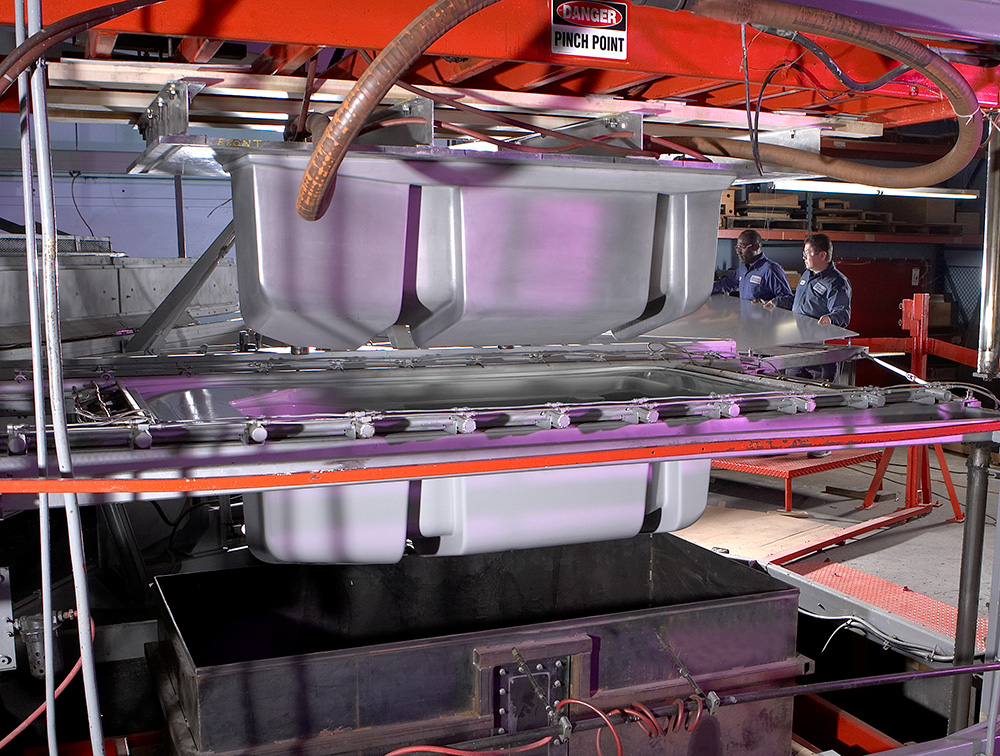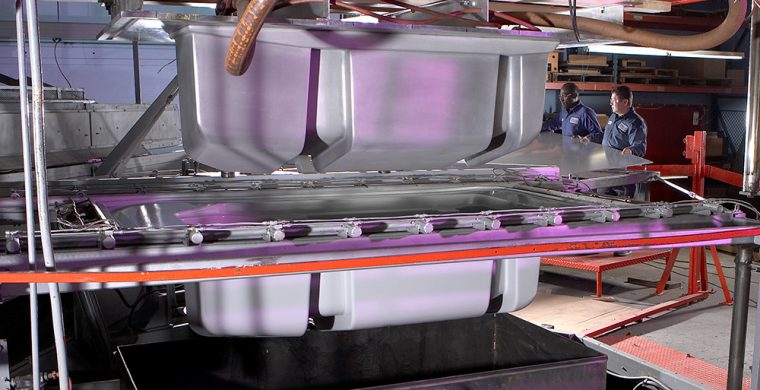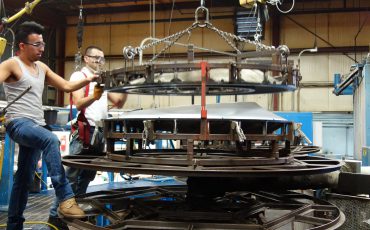
Thermoforming vs. injection molding tooling and materials are important to consider when choosing a plastics manufacturing process.
Thermoforming and injection molding are plastic manufacturing processes that differ in several important ways. Thermoforming supports larger part sizes and enables designers to consolidate multiple smaller parts into a single larger part. This plastics manufacturing process is cost-effective for small-to-medium production runs and produces unpainted parts that are visually appealing.
Plastic injection molding supports smaller part sizes in larger production volumes. Part consolidation can be more challenging, but injection molders can still achieve variable thickness in a single part. Compared to plastic thermoforming, however, injection molding has longer lead times. Plus, injection molded parts that are uncoated generally can’t match the surface quality of unfinished thermoformed parts.
Thermoforming vs. Injection Molding: Tooling
Injection molding tools (i.e., molds) are significantly more expensive than the tools used in plastic thermoforming. For prototype parts, a thermformer can use tools made of wood, epoxy, or other low-cost materials. Production tooling for plastic thermoforming is made of cast or machined aluminum, a lightweight and relatively inexpensive metal with good heat transfer properties.
Plastic injection molding uses a double-sided mold. This tool can be made of aluminum but may require a more expensive metal such as steel or beryllium-copper. In addition to tooling costs, it’s important to consider design limitations and potential defects. In addition to flashing, warping, and bubbling, injection molded parts may exhibit sink marks, ejector marks, and blemishes.
The tooling that’s used for injection molding is also more expensive because there are multiple actuating pieces. Plus, greater strength is required because of significant pressures. Injection molding can control both sides and create walls with different thickness. By contrast, thermoforming controls dimensions on just one side – the tool side.
Thermoforming vs. Injection Molding: Materials
Plastic thermoforming services and injection molding both use thermoplastic materials. Thermoplastics are a broad category of plastics that can be heated and cooled, and then melted and cooled again. Examples include acrylic/PVC, HIPS, HDPE, LDPE, PP, PETG, and polycarbonate. Although thermoforming and injection molding uses many of the same materials, there are some important differences.
Thermoforming uses flat plastic sheets in different colors, finishes, and thicknesses. These sheets are pre-heated and brought into contact with a mold using vacuum, pressure, or direct mechanical force. To create textured surfaces, either the sheet or the mold can be textured. Plastic injection molding doesn’t provide this type of flexibility since the only way to create a textured part is with textured tooling.
Unlike thermoforming, injection molding uses plastic pellets instead of plastic sheets. These pellets are melted and then injected into a closed cavity via hydraulic pressures. To learn more about the differences between thermoforming and injection molding, look for next month’s blog entry. Until then, please contact Gregstrom if you have questions or would like a quote for thermoformed parts.



